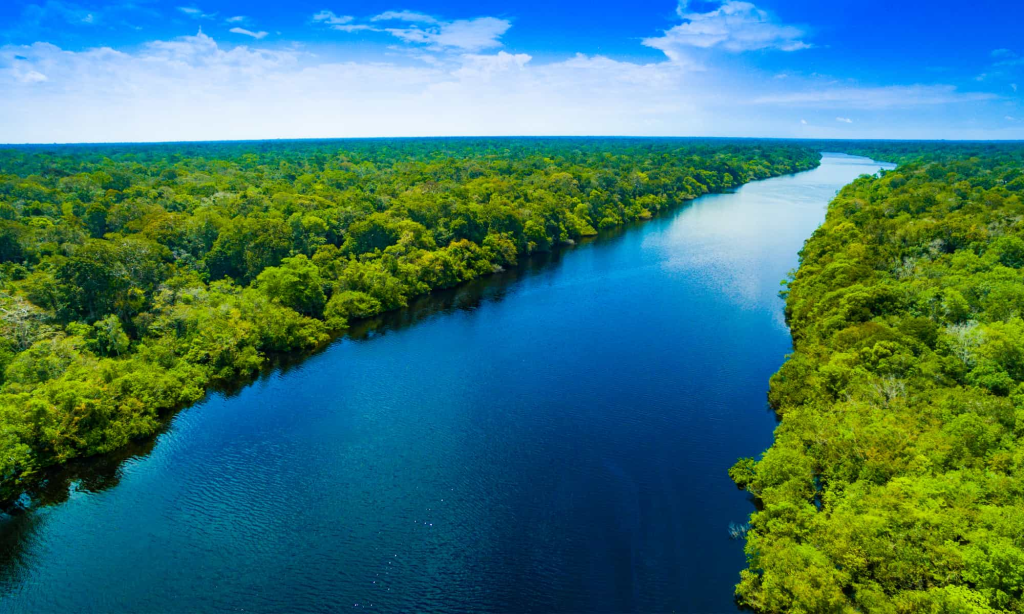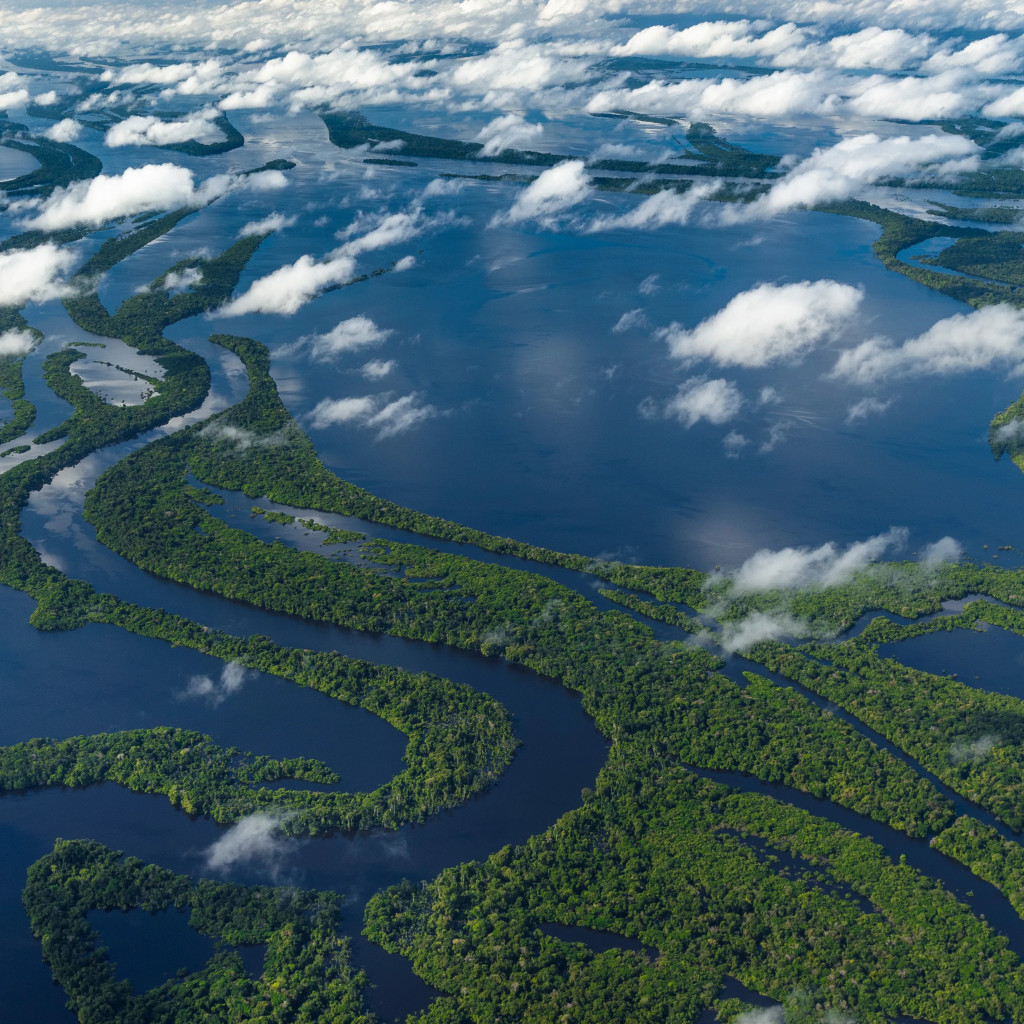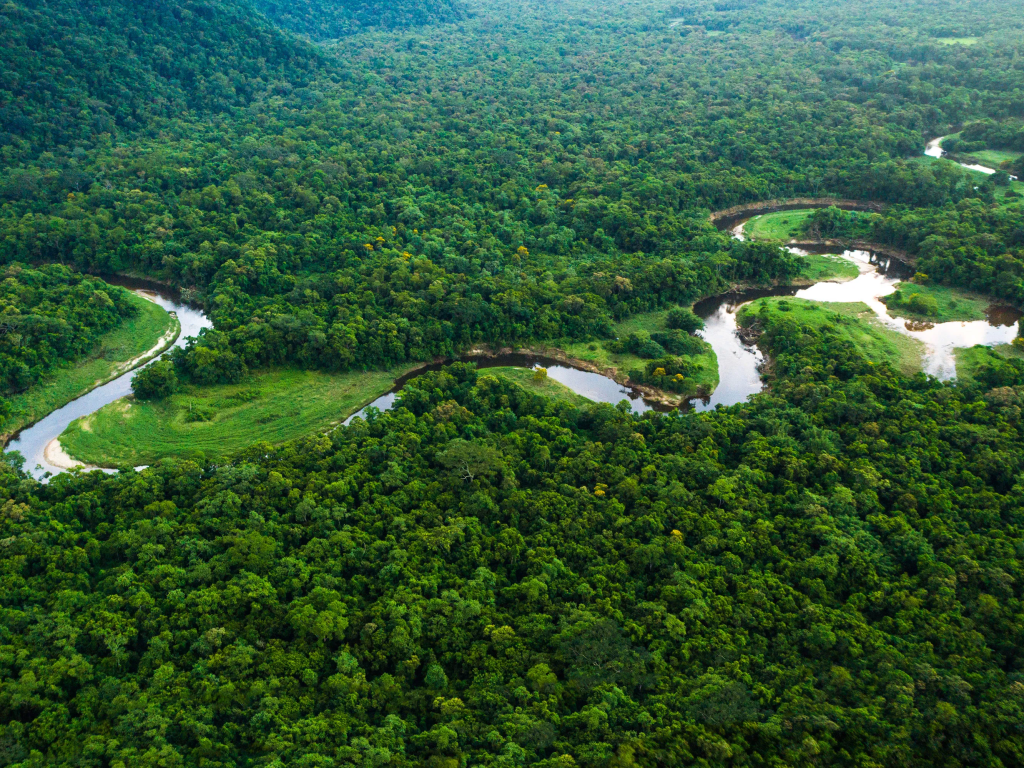The Amazon River is a massive river that stretches up to 4,000 miles (6,437 kilometres), whose journey begins high in the Andes mountains. The water system is so massive, and intricate waving through one of the most vital and complex ecosystems in the world- The Amazon Rainforest in South America.
The Amazon is by far the mightiest river on earth in terms of volume and width reaching a span of nearly 30 miles (48 kilometres) in some parts during the rainy season. Simply, the largest drainage system in the World.

Who gave it the name Amazon?
The first European to explore the Amazon, in 1541, was the Spanish soldier Francisco de Orellana, who gave the river its name after reporting pitched battles with tribes of female warriors, whom he likened to the Amazons of Greek Mythology.

Although the name Amazon is conventionally employed for the entire course-river, in Peruvian and Brazil nomenclature, its naming is properly applied only to sections of it. In Peru, the upper mainstream (feeds the numerous tributaries following from sources in the Andes) down to the Brazilian border, it is called Amazonas. In Brazil, the name of the river that flows from Peru to its confluence with the Negro River is Solimoes; from the Negro out to the Atlantic, the river is called Amazones.
Read: Protecting the Amazon Basin for Nature and People
Where does the Amazon River begin?
The origin of the world’s largest river by volume has surprisingly remained to be a misery over the years. Explorers and scientists have agreed on where to locate the start of the Amazon River since the mid-1600s, with no fewer than five in Southwestern Peru given the honour.

Recently, authors of a study published in the journal Areas say they’ve located the Mighty River’s true source: The Mantaro River in Southwestern Peru. If they’re right, their discovery would add 47 to 47 miles (75 to 92 kilometres) to the Amazon, which is currently measured at about 4,000 miles (6,437 kilometres) by the U.S. Geological Survey.
Using six different methods of measurement, including GPS trading data and satellite metres, professionals Kayaker James Contos and his team, funded in part by a great from the National Geographic Society, determined that the Mantaro River is about 10 per cent larger than the Apurimac River, which has been considered the Amazon’s source since 1971.
Read: Legends Of the Mysterious Bermuda Triangle.
One reason the Mantaro may have been overlooked, says Contos and his anthropologist co-author Nicholas Tripcevich of the University of California, Berkeley, is that; A twisting bend, or kink, in the river’s lower half, makes it look much shorter than it really is.
But the origin of a river depends on which definition of a river’s source they choose to apply; Is it the furthest point upstream that provides the largest volume of water, or is it the most distant point up the longest tributary in the river’s drainage basin?
The most internationally accepted definition is the most distant point of a river, the longest tributary that flows continuously. In their study, Contos and Tripcevich argue that the length of a tributary should trump whether it flows year-round.
The Amazon Basin.
The Amazon basin is the largest area of land that drains into the Amazon River and its tributaries. It occupies about 38 per cent of the total area of South America, covering a total of 2.67 million square miles (6.9 million square kilometres) according to the book “Biology of Hevea Rubber”.

More than two-thirds of the basin is covered with rainforest or selva. According to the Centre of Global Environmental Education, the basin is located in parts of six countries; Brazil, Peru, Colombia, Ecuador, Bolivia and Venezuela. Most of the basin and about two-thirds of the river itself is located in Brazil.
People staying in the Amazon River basin.
There are indigenous people who live in approximately 28 per cent of the Amazon basin, according to the Amazon Aid Foundation. This constitutes 350 different ethnic groups with more than 60 of these remaining essentially isolated, according to the Coordinator of Indigenous Organisation of the Amazon Basin (COICA).
Understand that indigenous groups such as Yanomamo and Kayapo have been living in the Amazon basin for thousands of years, slowly accumulating a detailed knowledge of the rainforest and methods to subsist from it. Some estimates put the first human settlements in the Amazon at 32,000 to 39,000 years ago. Since that time, Amazon people have developed lifestyles that are well integrated with the benefits and constraints of the rainforest.
Until recently; blowguns, arrows tipped with poison and spears were commonplace to hunt down game in the indigenous Amazon life.
The Amazon River basin biodiversity.
The Amazon River is home to more than 5,600 known species of fish, including 100 species of electric fish and adds up to 60 species of piranhas, according to Dorling Kindersley (DK).
The Arapaima, one of the largest freshwater fish in the world (up to 15 feet or 4.6 metres long) also makes its home here.
The Amazon River dolphin is the largest dolphin in the world; its colour changes with age from grey to pink to white.
Ultimately, The Amazon River basin is the home to the world’s rarest and most unique animals in the world. The Capybara, weighing up to 15 pounds, is the world’s largest rodent. It has a wide distribution across South America, but the animal especially like the unknown humid environs of the American river basin.
The third-largest big cat after the lion and the tiger, The Jaguar, had a difficult time over the last century due to deforestation and human encroachment. However, the Jaguar opts to reside in the Amazon River basin, since it’s hard to hunt it in the impenetrable portions of the rainforest.
Also known as ‘water jaguars’ or ‘river wolves’, Giant Otters are the largest members of the mustlid family and are closely related to washes. Due to high human hunting, there are only about 5,000 giant otters left across the entire Amazon River basin.
Also known as the golden marmood, The Golden Lion Tamarin has suffered terribly from human encroachment. By estimates, this new world monkey has lost a whopping 95% of its South American habitat since the arrival of European settlers 6,000 years ago. The bushy manned with reddish-brown hair surrounding a flat, dark-aged face, is resided in the Amazon river basin.
As a general rule, the more brightly coloured, The Poisonous Frog, the more powerful its venom, the iridescent green or orange species of a frog dwells in the very Amazon river basin.
Millions of years ago, during the Pleistocene epoch, the rainforest of South America was home to giant, multi-toe sloths like Megatherium. Today, one of the three-toed sloth, Bradypus tridactylus, its ability to swim, its three toes and its agonising slowness exists in the Amazon river basin.
Other unique animals in the Amazon river basin include; Giant Anteater, Black Caiman crocodile, the Keel-Billed Toucan, Harpy eagles, and Black space monkeys. All these, are one of Earth’s endangered animal species in the world’s biodiversity.
The Amazon basin contains one to 10 known species on Earth; 40,000 plant species, 3,000 freshwater fish species and more than 370 types of reptiles.
The importance of the Amazon Basin on the planet’s health.
More than 30 million people, including 350 indigenous and ethnic groups, live in the Amazon and depend on the nature of agriculture, clothing and traditional medicines.
There’s also a clear link between the health of the rainforest and the health of the planet. The rainforests, which contain 90 billion to 140 billion metric tons of carbon, help stabilize local and global climates. The Amazon also pumps about 7 trillion tons of water per year into the atmosphere, and its forest recycles 50%-75% of annual rainfall back into the atmosphere.






[…] The Amazon River; What You Need To Know About World’s Largest River […]
[…] Read: The Amazon River; What You Need To Know About World’s Largest River […]